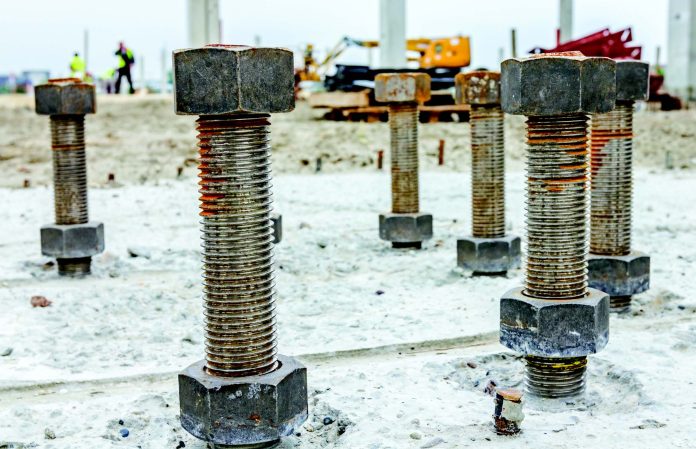Changes to the building code (specifically AS 5216:2021) requires builders to use correctly tested and certified concrete anchor products in a wide range of circumstances that previously were not considered.
While the standard was updated back in 2021, the National Construction Code (NCC) 2022 has endorsed those updates as of May 2023. It’s important that builders and tradespeople are aware of the changes and implement all provisions.
NEW RULES
“There are some new requirements in regard to concrete anchor fixings that are enforced by NCC 2022,” says Martin Kusz, structural engineer and director at KUSCH Consulting Engineers. The company works with architects and builders throughout Australia, providing structural and seismic solutions for residential, commercial and industrial buildings. “These requirements have to do with the capacities of concrete anchors, taking into consideration the cracked condition of the concrete.”
Historically, concrete anchors were tested in un-cracked concrete. Loads were applied, data obtained and the results published. In the real world, however, fine cracks usually appear in most concrete buildings and those cracks can have a big impact on the force that can be applied to those anchors.
WHEN CRACKS APPEAR
The cracking happens for several reasons. When suspended concrete floors are loaded they flex, and fine tension cracks form on the surface. This is where services are connected and those fine cracks impact on the concrete anchors that are connected to it.
“NCC 2022 now states that the design of concrete anchors must consider the presence of cracks up to a certain width,” says Kusz. “Testing within a concrete sample must have that cracking present. The problem is that if testing hasn’t been completed in a cracked medium, the results give much higher capacities.”
While it might be accurate that an anchor can support two tonnes when there are no cracks present, it may only be one tonne in cracked concrete. If you’re going to hang all the services from that concrete ceiling, it’s imperative that the correct anchors with suitable capacity are used.
“It’s the responsibility of the manufacturers to have their products independently tested when determining the capacity of each anchor,” says Kusz. “There is a very specific concrete anchor assessment called the European Technical Assessment (ETA). The ETA certificate lists all the performance characteristics of the anchor.”
POLICING THE CHANGES
A type of anchor widely used by tradespeople is called a knock-in or drop-in anchor. Unfortunately, they don’t perform well in the presence of cracking.
At the same time, it’s rare for them to fail as they’re generally used to hang relatively small and lightweight items from the underside of a slab. There’s also a good degree of redundancy. The big issue is that they can work fine for many common scenarios, but they will no longer be compliant.
“Different states police these requirements to different degrees,” says Kusz. “Generally, if you build something that’s not compliant with the NCC, as in the case of the new concrete anchor code, you will be defected and have to rectify the non-compliance.”
GET ADVICE
Associated with the anchoring changes is a requirement to design for seismic loads. These seismic loads also need a particular classification of anchor.
That classification is based on the crack width of the worst crack. It can be difficult for tradies to determine the prospective size and extent of cracks in a concrete build. While there are some simplified tables available, the best thing you can do is seek advice.
“KUSCH is a structural consulting fi rm and we specialise in the problems tradies face in supporting services within a building,” says Kusz. “We can provide the certification of concrete anchors and how to interpret them. We can give information on the concrete fixing options available and which fixings can be used for certain applications. It can be a five-minute conversation to explain the situation and the solution.”
OTHER CONSIDERATIONS
Whenever anchoring is being positioned, there are many different aspects to be considered. They may have to be designed to withstand fire or they may have a shallow embedment. Sometimes, a hole can only be drilled to a certain depth because there’s reinforcing or post tensioning in the slab. There’s a reasonable amount of science with every service that is hung. That’s why advice from a structural engineer is wise.
“Another place to get good technical advice is from the major anchor manufacturers,” says Kusz. “Companies such as ICCONS have an experienced team of engineers who will provide tradespeople with good guidance. In some situations, where the anchors haven’t been tested for a specific scenario, a specialist consultant can engineer a performance solution.”
The most important thing is to use the correct anchor, system or solution that meets the requirements of the building code.
“The last thing you want to do is to install something that leaves you exposed from a compliance perspective,” says Kusz. “It’s not worth the hassle, time or cost of rectification.”





